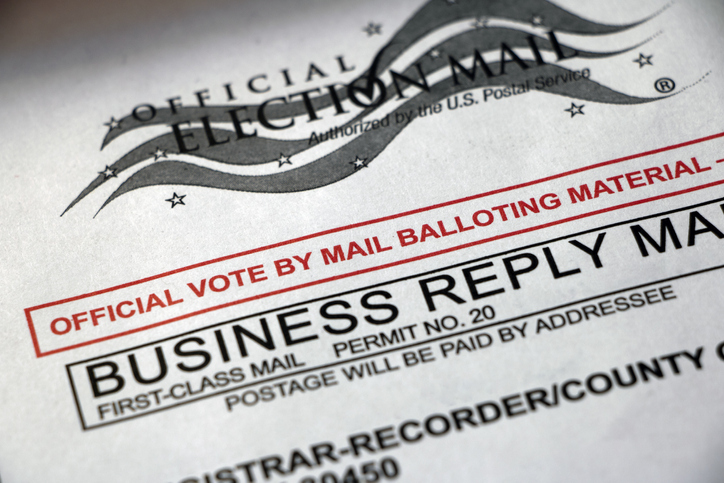Political Science professor examines pandemic’s effect on state, presidential elections
Article body
With nearly 20 states delaying primary elections, mail-in ballots a widely debated topic and a presidential election on the horizon, the country’s political landscape has been greatly affected by the COVID-19 pandemic. Assistant Political Science Professor Ryan Williamson looks at the ways this year’s elections have been impacted, how voters and candidates will be affected as a result of the ripple effect from the coronavirus and how future elections may be influenced for years to come.
How has the landscape changed for state and national elections since the stay-at-home orders went out in mid-March, and how do you see primaries and other elections being affected going forward now that many states are lifting those orders?
The landscape has not necessarily evolved, so much as it has highlighted some of the existing divisions among the electorate. For opponents of the president, this is another example in their mind that the president is unfit and should be voted out. For supporters of the president, the virus is beyond his control, and he is still best equipped to bring economic growth and prosperity. This can serve as a mobilizing event for both sides. Paired with what we saw in the 2018 midterms, the 2020 election is likely to see above-average turnout. The onus is then on states to provide safe methods of casting ballots for everyone in light of stay-at-home orders being lifted.
Nearly 20 states have had to delay their primaries due to the coronavirus. How will that affect the electoral process in those states, and what possible repercussions or ripple effect might that create in the coming months?
The postponements will impact down-ballot races. One major impact will be the effect of the postponement on the length of the campaign season. The truncated timeline between the primary and the general election will alter campaign dynamics, which may impact who ultimately wins in November. Changes in state electoral rules also may impact who appears on the ballot. For example, filing deadlines have been extended, the number of required signatures for petitions have been reduced and electronic methods have been permitted in ways that were previously not allowed. Meanwhile, other states have made no such changes. Therefore, some candidates and other items (like initiatives and amendments) may appear on the ballot that otherwise would not have in some states, and some candidates and items may not appear even though we might expect them to under different circumstances. The resulting outcomes in November all have consequences for representation and policy outcomes, which always has the potential to have large and enduring effects.
What are the challenges associated with a mail-in voting option that has been much talked about, and do you see that being used in more and more states’ elections?
There certainly seems to be a growing demand for mail-in ballots. Indeed, two U.S. senators recently introduced a bill that would require all states to offer alternative options to voting in-person for federal elections. Right now, it is hard to imagine this bill becoming law, but it does speak to that growing demand. Therefore, many states are looking to use some alternative, at least in the short term. Indeed, some states have already taken steps in that direction.
Vote by mail is already used by a handful of states, and there’s no evidence to suggest it would benefit one party over the other. There is also little evidence of widespread voter fraud of any kind in elections. However, concerns about potential fraud and creating a one-sided advantage currently shape the debate about increased mail-in ballots. The greatest challenge right now to implementing mail-in ballots for all states is cost. Postage alone would cost hundreds of millions of dollars, and it has been argued that requiring voters to provide their own postage is akin to a poll tax. Additionally, many voters still need the in-person option, such as those with disabilities or those in need of language assistance.
How do you think the COVID-19 pandemic will affect candidates’ campaigns and the way they interact with potential voters, including at the conventions?
The campaigns will have to be creative and innovative in how they reach some voters. The traditional method of shaking hands and kissing babies will obviously not suffice and may even be dangerous, considering the age of both nominees. Virtual town halls and speeches have already been utilized to some degree, and I imagine even greater use of them throughout the summer. Digital ads are also likely to be of increasing importance. However, as is almost always the case with presidential elections, the candidate who can drive the narrative—whatever the means of delivery—is likely to be successful.
How will the coronavirus affect the 2020 Presidential Election for voters and the media?
The election is—at least in political time—a long way off, so it is difficult to say what impact the virus might have. However, as of now, we are likely to see even greater and more polarizing debates around managing the spread of the virus and opening things back up in the name of economic recovery. For voters, this will likely be a mobilizing event. Candidates will point to actions and inactions from the president to mobilize votes against the incumbent, and the president is likely to continue his current narrative around opening things back up to potentially grow the economy.
Given that even the most optimistic timelines suggest we will not have a widely available vaccine this year, we are likely to see the death toll continue to climb and unemployment remain high. For the media, this will potentially drive much of the narrative around the campaign, which would necessarily drown out other issues that may have received greater attention under different circumstances.
Do you think this situation will result in permanent changes to our election process?
Though we cannot say whether this situation will result in permanent changes to our election process, I think it is safe to say many perceptions around elections will change as a result. As previously mentioned, I think the increased desire by many to be able to cast a ballot without jeopardizing their health has increased demand for mail-in ballots. It can be difficult to obtain a mail ballot in some states, as voters must have an excuse to acquire a one-time absentee ballot. Some states have already loosened these restrictions though, which could have a lasting impact. Also, the pandemic has shown a need for greater resources to conduct elections, whether it is the ability to mail and count ballots or have hand sanitizer, masks for poll workers and disinfecting wipes to ensure a safe polling place. Election office budgets are very small in most places, so an increase in funding for these offices is likely to be a wise investment.
Auburn University is a nationally ranked land grant institution recognized for its commitment to world-class scholarship, interdisciplinary research with an elite, top-tier Carnegie R1 classification, life-changing outreach with Carnegie’s Community Engagement designation and an undergraduate education experience second to none. Auburn is home to more than 30,000 students, and its faculty and research partners collaborate to develop and deliver meaningful scholarship, science and technology-based advancements that meet pressing regional, national and global needs. Auburn’s commitment to active student engagement, professional success and public/private partnership drives a growing reputation for outreach and extension that delivers broad economic, health and societal impact.






